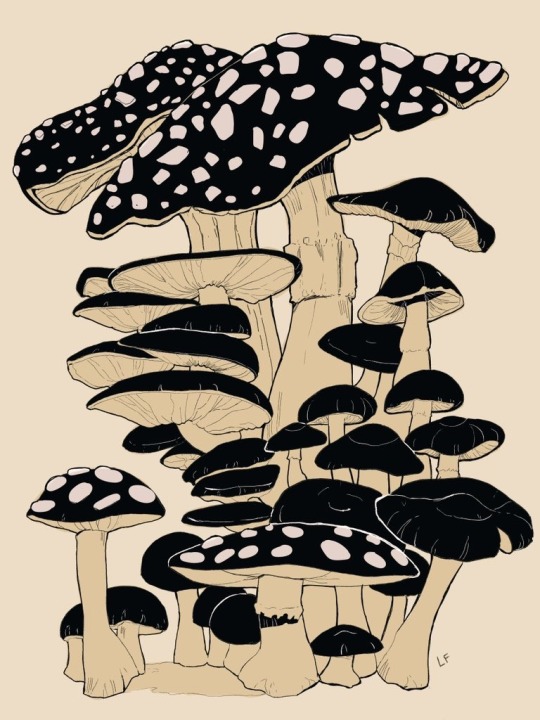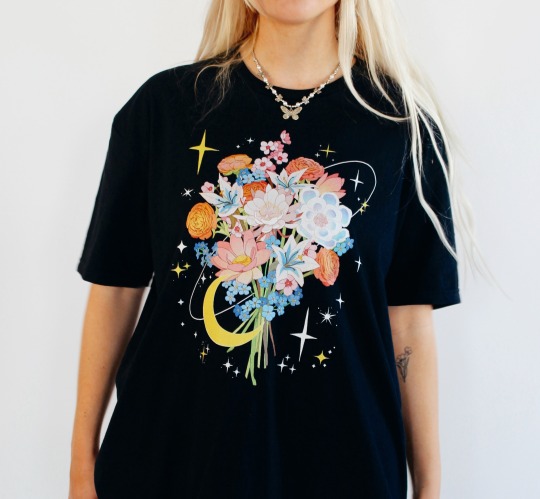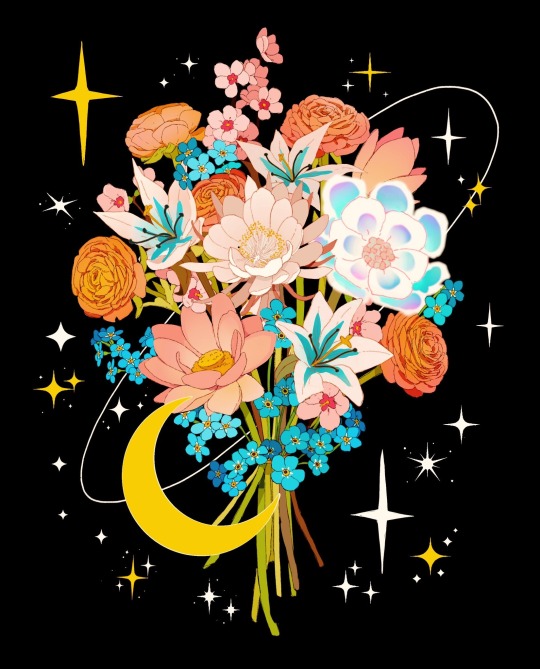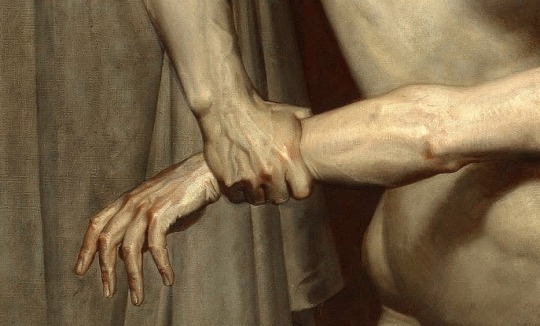Text
🎉 Write characters that you find interesting and compelling.
🎉 Don't worry about making characters too over the top, or 'too much'.
🎉 Write characters who want big things.
🎉 Write characters with conflict between what they want and what they need.
🎉 Write characters who don't realize they are doing harm.
🎉 Write characters who don't know how to communicate well.
🎉 Write characters with people they love in the way of what they want.
🎉 Write characters with amazing abilities who use them in ways that unintentionally fuck them over.
🎉 Write messy characters!
4K notes
·
View notes
Text
if you write a strong character, let them fail.
if you write a selfless hero, let them get mad at people.
if you write a cold-hearted villain, make them cry.
if you write a brokenhearted victim, let them smile again.
if you write a bold leader, make them seek guidance.
if you write a confident genius, make them be wrong, or get stumped once in a while.
if you write a fighter or a warrior, let them lose a battle, but let them win the war.
if you write a character who loses everything, let them find something.
if you write a reluctant hero, give them a reason to fight.
credit:@aj-eddy
11K notes
·
View notes
Text
Lil’ Tip
I see two common formulas when a character is severely hurt
injured >> panic >> faint
or
injured >> hide it >> faint
While these two formulas are great, I am here to propose other things people do when they are in severe physical pain. pain to this degree throws a persons entire body out of wack, show it!
here are some other less commonly found things people do when they’re in severe pain:
firstly, repeat it after me, kids! not everyone faints when they’re in a ton of pain! some people wish they could faint
but they do tremble, convulse, or thrash uncontrollably (keep in mind, trembling and convulsing are something the body does of it’s own accord, thrashing is an action taken by the person)
hyper/hypoventilate
become nauseous
vomit (in severe cases)
hallucinate
lose sight (temporarily)
lose hearing (temporarily)
run a low-grade fever
run a high-grade fever (in severe cases)
become unaware of surroundings
develop a nosebleed
develop a migraine
sweat absolute bullets
feel free to add more in comments/reblogs!
5K notes
·
View notes
Text
Here's a extensive list of character flaws to consider for your storytelling:
1. Stubbornness
2. Impulsiveness
3. Jealousy
4. Indecisiveness
5. Arrogance
6. Insecurity
7. Impatience
8. Manipulativeness
9. Hot-tempered
10. Perfectionism
11. Distrust
12. Procrastination
13. Selfishness
14. Pessimism
15. Dishonesty
16. Greed
17. Cowardice
18. Lack of empathy
19. Overly competitive
20. Control freak
21. Lack of ambition
22. Oversensitivity
23. Laziness
24. Lack of self-discipline
25. Addiction
26. Closed-mindedness
27. Lack of assertiveness
28. Impulsivity
29. Materialistic
30. Lack of accountability
31. Inflexibility
32. Moody
33. Overly critical
34. Judgmental
35. Naivety
36. Attention-seeking
37. Suspiciousness
38. Overprotectiveness
39. Ingratitude
40. Vengefulness
41. Envy
42. Indulgence
43. Disloyalty
44. Self-centeredness
45. Negativity
46. Manipulative
47. Disorganized
48. Lack of self-awareness
49. Irresponsibility
50. Intolerance
51. Overthinking
52. Restlessness
53. Excessive need for control
54. Rigidity
55. Overly trusting
56. Recklessness
57. Narcissism
58. Escapism
59. Gullibility
60. Lack of ambition
61. Inability to forgive
62. Excessive need for validation
63. Attention-seeking behavior
64. People-pleasing
65. Overprotectiveness
66. Self-doubt
67. Passive-aggressiveness
68. Inability to handle criticism
69. Lack of boundaries
70. Superiority complex
Remember, a well-rounded character doesn't need to possess all of these flaws. Select a few that resonate with your character's personality, background, and story arc. Balancing flaws with strengths and vulnerabilities will help create multi-dimensional and relatable characters.
Happy writing!
2K notes
·
View notes
Text
In your novel, eye color can be a defining characteristic of your characters and contribute to their overall appearance and personality. Here's a guide to various eye colors and the impressions they can create:
1. Blue eyes: Often associated with calmness, tranquility, and serenity. Blue-eyed characters can be seen as trustworthy, peaceful, and introspective.
2. Green eyes: Symbolic of mystery, vitality, and a touch of mischief. Characters with green eyes may exude an air of enigma, creativity, and curiosity.
3. Brown eyes: The most common eye color, representing stability, warmth, and reliability. Characters with brown eyes can be seen as grounded, down-to-earth, and approachable.
4. Hazel eyes: A blend of brown, green, and gold, hazel eyes convey a sense of adaptability, versatility, and depth. Characters with hazel eyes may have a multifaceted personality and an ever-changing aura.
5. Gray eyes: Gray eyes often evoke a sense of wisdom, intelligence, and mystery. Characters with gray eyes can be perceived as insightful, calm, and capable of great depth of thought.
6. Amber eyes: Radiating warmth and intensity, amber eyes symbolize strength, passion, and determination. Characters with amber eyes can possess a fiery spirit and a magnetic presence.
7. Violet eyes: Uncommon and ethereal, violet eyes create an otherworldly and mystical impression. Characters with violet eyes can be associated with enchantment, spirituality, and a touch of magic.
8. Black eyes: While rare, characters with black eyes can convey a sense of intensity, power, and mystery. Their gaze may be captivating and alluring, drawing others in.
Remember, eye color is just one aspect of a character's appearance, and it's essential to consider other physical features, personality traits, and the overall narrative when developing your characters. Also, keep in mind that eye colors can vary in shades and can even change depending on lighting and emotions.
Use this guide as inspiration to create unique and captivating characters in your novel. Happy writing!
1K notes
·
View notes
Text










The drawing/the tee! Dew Drop collection at my shop 🍄🌱
3K notes
·
View notes
Photo

Utonulá / Drowned Woman, 1893 - pastel on cardboard.
― Jakub Schikaneder (Czech, 1855-1924)
4K notes
·
View notes
Text
A comprehensive list of eye colors that you can use for your novel:
1. Blue eyes
2. Light blue eyes
3. Deep blue eyes
4. Sapphire blue eyes
5. Ice blue eyes
6. Steel blue eyes
7. Aqua blue eyes
8. Teal eyes
9. Turquoise eyes
10. Green eyes
11. Emerald green eyes
12. Moss green eyes
13. Olive green eyes
14. Hazel eyes
15. Light brown eyes
16. Dark brown eyes
17. Amber eyes
18. Golden brown eyes
19. Honey brown eyes
20. Chocolate brown eyes
21. Gray eyes
22. Stormy gray eyes
23. Silver gray eyes
24. Steel gray eyes
25. Smoky gray eyes
26. Violet eyes
27. Lavender eyes
28. Amethyst eyes
29. Lilac eyes
30. Black eyes
31. Jet black eyes
32. Onyx black eyes
33. Charcoal black eyes
34. Ruby red eyes
35. Wine red eyes
36. Mahogany eyes
37. Topaz eyes
38. Copper eyes
39. Caramel eyes
40. Walnut eyes
41. Pink eyes
42. Almond eyes
43. Sienna eyes
44. Maroon eyes
45. Peridot green eyes
46. Chartreuse eyes
47. Jade green eyes
48. Pine green eyes
49. Cornflower blue eyes
50. Indigo eyes
605 notes
·
View notes
Text
When writing about childhood trauma in a novel, it's important to handle the topic with sensitivity and nuance. Here are some quick tips to consider:
1. Research and understand: Take the time to research and understand the specific type of trauma you're addressing in your novel. This will help you portray it accurately and respectfully.
2. Show the impact: Explore how the childhood trauma has shaped the character's thoughts, emotions, and behaviors. Illustrate the long-lasting effects it has had on their development and relationships.
3. Use flashbacks sparingly: Utilize flashbacks strategically to reveal key moments from the character's past that contribute to their trauma. Ensure that the flashbacks serve a purpose in the narrative and provide deeper insights into the character's experiences.
4. Depict coping mechanisms: Show how the character has developed coping mechanisms to deal with their trauma. This can include avoidance, dissociation, or seeking control in certain areas of their life.
5. Allow for healing and growth: Give your character opportunities for healing and growth throughout the story. Show how they confront their trauma, seek support, and gradually find ways to overcome the impact it has had on their life.
6. Avoid sensationalism: Handle the portrayal of childhood trauma with care, avoiding excessive graphic or gratuitous details. Focus on the emotional journey of the character rather than relying solely on shocking events for impact.
7. Show support systems: Include supportive relationships and resources that aid the character in their healing process. This can involve therapists, friends, or mentors who offer understanding, guidance, and empathy.
8. Highlight resilience: Illustrate the character's strength and resilience in the face of their trauma. Show how they find ways to persevere, grow, and rebuild their lives despite the challenges they have faced.
9. Offer hope and redemption: Provide a sense of hope and the possibility of healing for your character. Allow them to find moments of redemption and transformation, demonstrating that healing is attainable.
10. Approach with empathy: Approach the topic of childhood trauma with empathy and compassion. Treat the characters' experiences with respect, acknowledging the complexity and individuality of each person's journey.
1K notes
·
View notes
Photo







Dante And Virgil In Hell, 1850 - oil on canvas.
— William-Adolphe Bouguereau (French, 1825-1905)
87K notes
·
View notes
Text
A list of hair colors that you can use for your novel:
1. Black hair
2. Jet black hair
3. Blue-black hair
4. Brown hair
5. Light brown hair
6. Dark brown hair
7. Chestnut brown hair
8. Auburn hair
9. Red hair
10. Ginger hair
11. Strawberry blonde hair
12. Blonde hair
13. Platinum blonde hair
14. Ash blonde hair
15. Golden blonde hair
16. Sandy blonde hair
17. Dirty blonde hair
18. Honey blonde hair
19. Silver/Gray hair
20. White hair
21. Salt-and-pepper hair
22. Blue hair
23. Green hair
24. Purple hair
25. Pink hair
26. Lavender hair
27. Teal hair
28. Turquoise hair
29. Gray hair
30. Silver hair
31. Blonde highlights
32. Brown highlights
33. Red highlights
34. Caramel highlights
35. Balayage
36. Ombre
37. Two-tone hair
38. Multicolored hair
39. Burgundy hair
40. Mahogany hair
41. Copper hair
42. Ebony hair
43. Golden brown hair
44. Platinum silver hair
45. Chestnut highlights
46. Rose gold hair
47. Lilac hair
48. Coral hair
49. Pastel blue hair
50. Rainbow hair
Feel free to mix and match these hair colors or use them as inspiration to create unique variations. Remember that hair color can be a significant aspect of a character's appearance and can complement their personality, traits, and overall story. Happy writing!
764 notes
·
View notes






